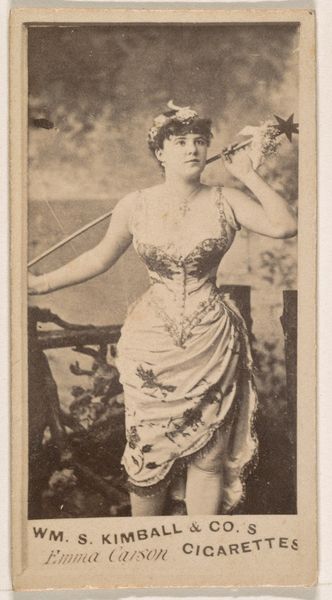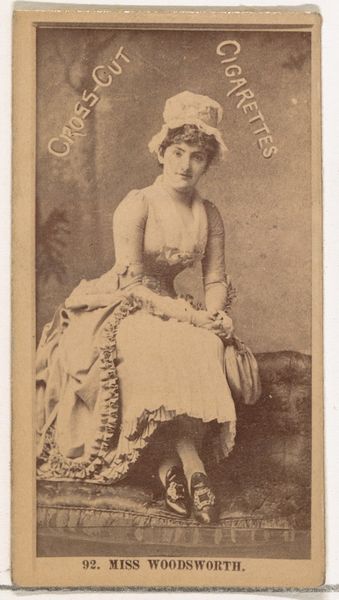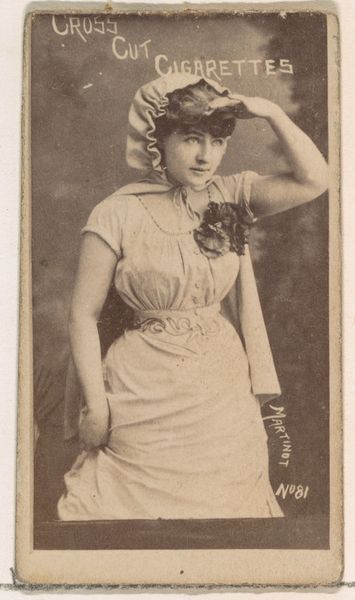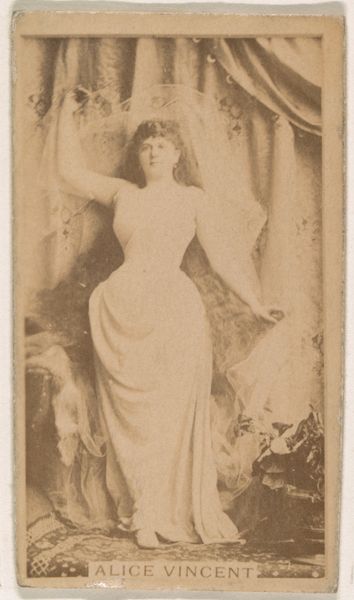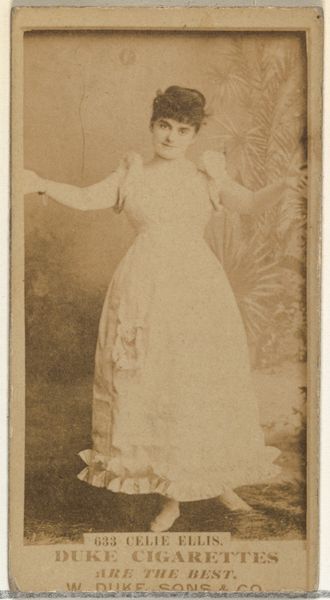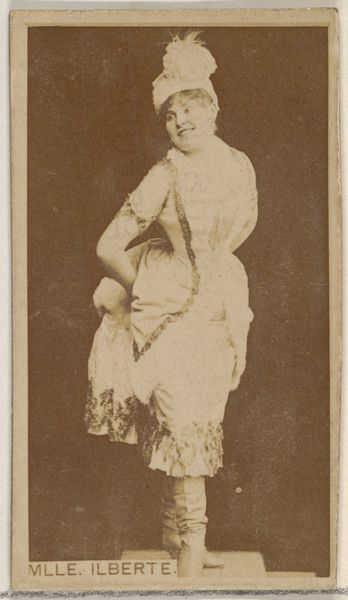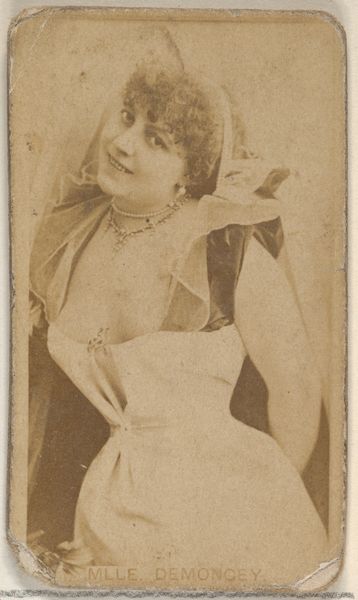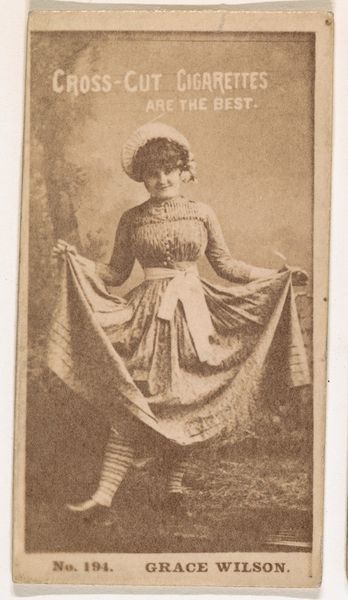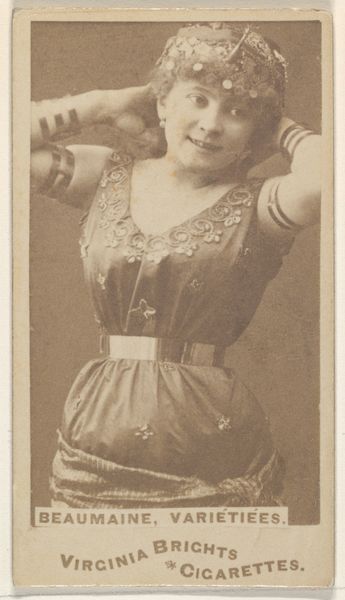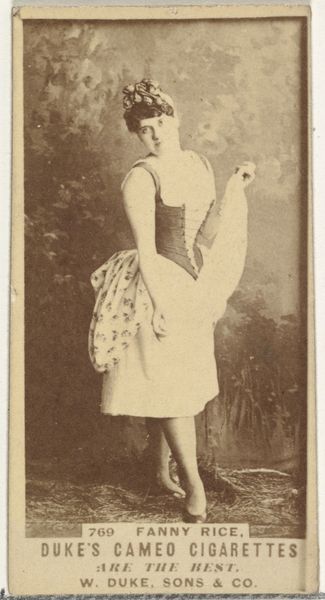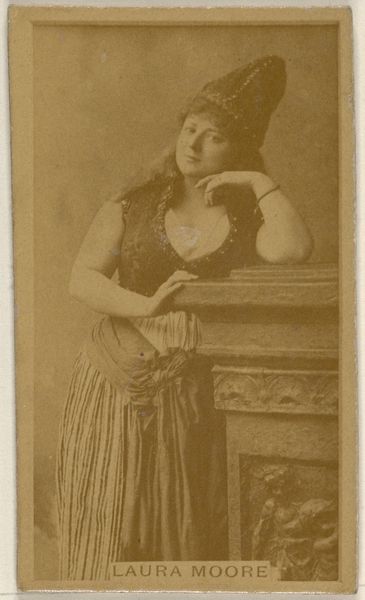
Card Number 212, Fanny Rice, from the Actors and Actresses series (N145-1) issued by Duke Sons & Co. to promote Cross Cut Cigarettes 1880s
0:00
0:00
Dimensions: Sheet: 2 1/2 × 1 3/8 in. (6.4 × 3.5 cm)
Copyright: Public Domain
Curator: It strikes me as playful. There's a sense of self-aware theatricality here. Editor: Indeed! We're looking at a print, "Card Number 212, Fanny Rice," from the Actors and Actresses series by W. Duke, Sons & Co., dating back to the 1880s. These were trade cards included in Cross Cut Cigarettes, quite popular at the time. Curator: Ah, so it’s a promotional object. It carries so many echoes of the period. She seems like a modern-day goddess, slightly classical with that draped gown, yet undeniably presented for mass consumption. Editor: Absolutely. The classical garb she wears speaks to that era's fascination with antiquity, a sort of idealized past often invoked to ennoble modern subjects. But consider that this card circulated widely; it brought imagery typically reserved for higher art into the everyday lives of the burgeoning middle class. Curator: I'm curious about that gesture—the way she holds her hand. Almost beckoning. Is there something significant in that gesture beyond just a coy invitation to buy cigarettes? Editor: It might allude to her stage persona, a characteristic pose, or even just a visual cue meant to engage the viewer. In these popular images, that gesture would invite the viewer into the world she represents, hinting at the character she embodies onstage. It also directly engages you, drawing you into the transaction of the cigarette purchase. Curator: The framing of these images—these cards being akin to little windows—offers an easily consumed identity. In terms of celebrity and advertising, it's ingenious, don't you think? Editor: Yes, these trade cards played a crucial role in shaping consumer culture and our early understandings of celebrity. What’s so compelling is how the commodification of the individual, Fanny Rice, then becomes intrinsically linked with the product itself. Curator: A snapshot into a slice of cultural history contained in a little rectangle of paper. Editor: It really showcases how intertwined commerce, art, and identity were even then. Each was playing with visual language to promote ideas that were emerging with industry and modern economies.
Comments
No comments
Be the first to comment and join the conversation on the ultimate creative platform.
